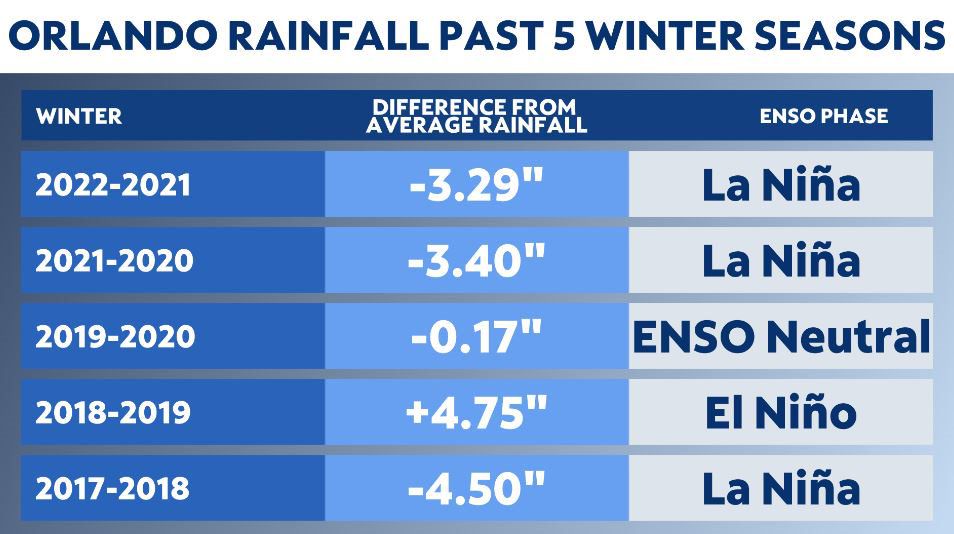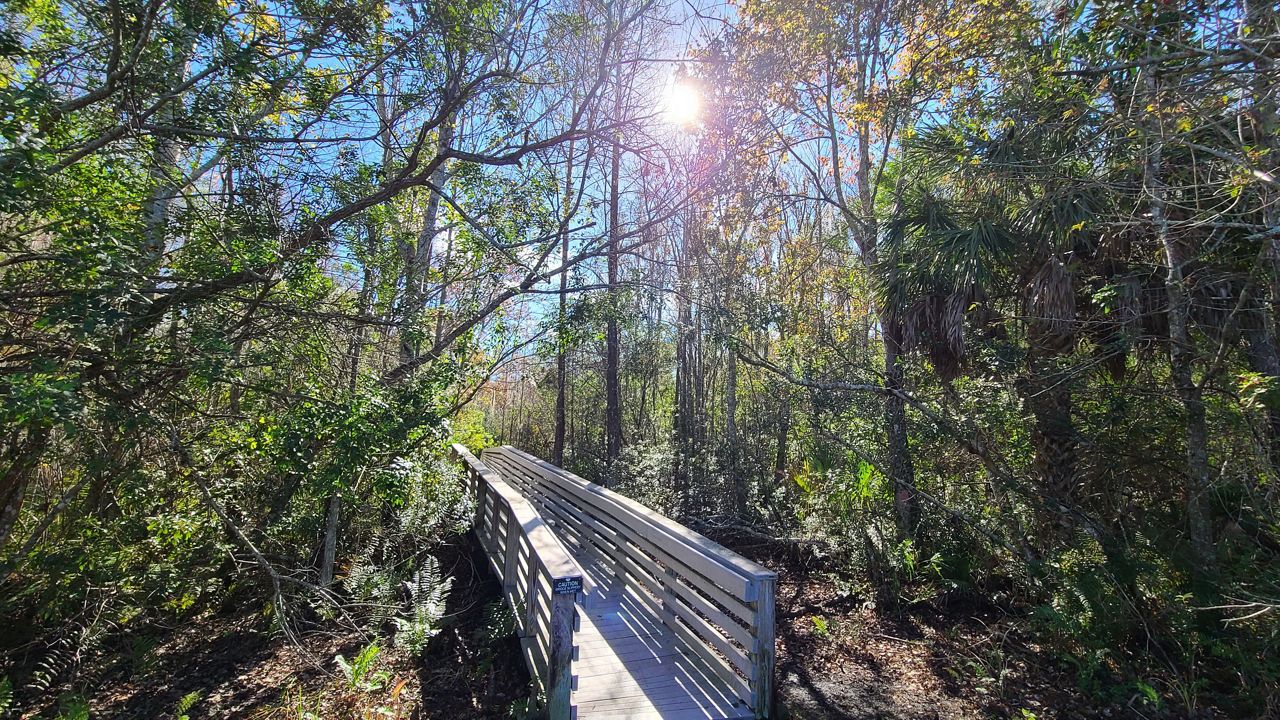It looks like La Niña will stick around for another winter season.
This typically means a warmer and drier than average December, January and February for Central Florida.
But, have the past two winters been just that for our region? The short answer is yes.
In fact, for the past two winter seasons, Orlando has picked up less than four inches total during the months of December through February.
Normal rainfall for Orlando during the winter months is about seven inches.
The last time Orlando had close to normal rain during winter was in 2019-20.
This is when ENSO was neutral, meaning it was not an El Niño or La Niña year.
Meanwhile, 2018-19 was an El Niño year, and the City Beautiful picked up more than a foot of rainfall that season.
It finished in the top 15 wettest on records.

El Niño winter’s tend to bring wetter and cooler than normal weather to our area.
When you look at Central Florida as a whole, all the main observation sites across the region fell drier than normal for the previous two winters.
During the El Niño year, all of Central Florida experienced wetter than normal conditions.
While there has been a clear line in the sand with rainfall when it comes to La Niña winters versus El Niño, temperatures have trended warmer regardless of the of the ENSO phase.
In fact, you have to go back to the winter of 2010-11 to find the last time Orlando had gone through a colder than average winter.
Each of the past several years has featured warmer than normal winters for the region.
The bottom line is that every El Niño and La Niña are different.
However, if the past few years have taught us anything, get ready for a drier and warmer than average winter.
Only time will truly tell.
Our team of meteorologists dives deep into the science of weather and breaks down timely weather data and information. To view more weather and climate stories, check out our weather blogs section.
